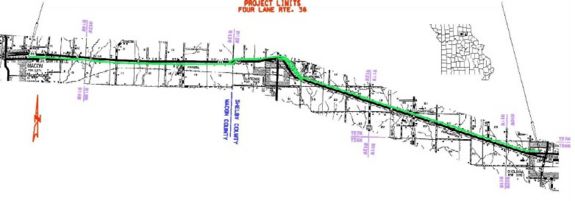121.7 Program Estimates
The Program Estimate shall not use the cost per mile pricing. The Program Estimate shall be developed at the preliminary plan stage after 30% of the plans are completed.
The best type of Program Estimate that can be produced at this stage of project development is a historic-based estimate. Based on the quantities calculated from the preliminary plans and historical data from previous bid openings, a fairly accurate Program Estimate can be produced.
The preliminary plans should provide enough detail to allow a fairly accurate Program Estimate of the major project quantities. Generally, 80% of the cost of a project will be included in the 20% of the pay items that comprise the major items of the project. All other anticipated construction costs should also be included in the Program Estimate.
The Project Scoping Form is available for detailed documentation of various project design elements of the project in order to assist the project estimator in covering all applicable project elements while establishing the program estimate. While the tool does not yield an estimate itself, it serves to clearly define and document the various project elements which combine to impact the project cost.
As details of the project become finalized, the Program Estimate is refined and updated in the STIP, as part of the annual STIP update, until the fiscal year it is scheduled to be awarded.
The programming estimate must address the total project cost and include estimated costs for, at a minimum, PE, CE, Construction, RW, Utilities, and Bridge. Program estimate documentation (including all milestone updates) must be stored in e-Projects under the “DE Estimate” content type. In addition to the estimate itself, e-Projects should include supporting documentation for the estimate of each area.
In addition, estimates of right of way costs based on generic land values will not be considered to provide the level of confidence that MoDOT requires to make STIP commitments.
Tentative right of way lines included on preliminary plans will provide a reasonable estimate of the easements and right of way required for each project. These can then be combined with an estimated amount for each property to arrive at a fairly accurate right of way estimate.

All other anticipated right of way and construction costs should also be included in the Program Estimate. These may include Heritage and Homestead Valuation adjustment costs for large utility relocations, right of way easements necessary for construction activities, non-contractual, incentive/disincentive clauses, contract acceleration clauses, major environmental mitigation costs, etc.
The Engineering Factors Report is a useful document to help calculate a project's future engineering costs such as preliminary and construction engineering and right of way incidentals. The report is updated annually.